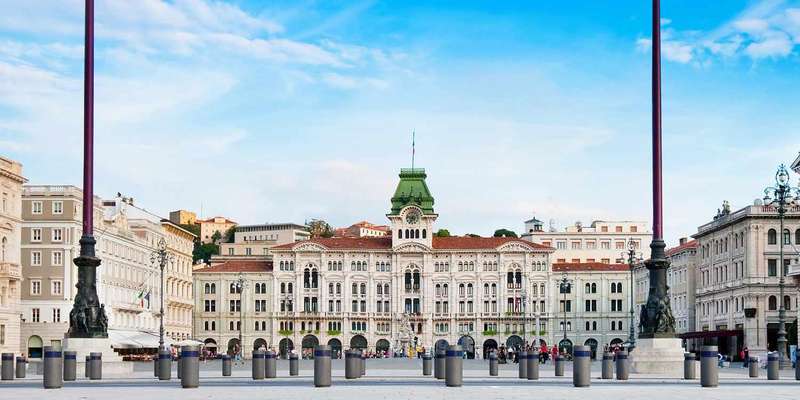- Home
- Useful Tips
- Visiting Trieste's lesser-known...
Most visitors to Trieste flock to Miramare Castle, missing the city's extraordinary Habsburg-era palaces that whisper stories of Austro-Hungarian grandeur. Over 70% of travelers leave unaware that central Trieste contains more imperial residences per square mile than Vienna, according to local tourism board data. These overlooked architectural treasures present a frustrating paradox – their unmarked courtyards and restricted opening hours make independent exploration nearly impossible, while expensive guided tours often rush past the most fascinating details. The result? Cultural travelers waste precious vacation time circling nondescript alleys or, worse, abandon their palace-hunting entirely after one too many closed gates. This accessibility challenge matters because these palaces hold the key to understanding Trieste's unique identity as a crossroads of Italian, Slavic, and Central European influences – their faded stucco facades conceal ballrooms where Franz Joseph dined, libraries that inspired James Joyce, and hidden gardens unchanged since the 19th century.


Decoding palace access – when and how to visit without tours
The Habsburg palaces operate on a baffling schedule that even many locals struggle to navigate. While Miramare welcomes visitors daily, gems like Palazzo Revoltella or Palazzo Gopcevich might open only three afternoons weekly, often during siesta hours when tourists are elsewhere. Here's the local secret: municipal palaces typically close Mondays but offer free admission on the first Sunday of each month. For Palazzo Carciotti, arrive precisely at 10 AM when guards permit brief courtyard visits before official tours begin. Don't be fooled by locked main doors – Palazzo Economo's side entrance often stays unlocked for municipal workers until 2 PM. Pro tip: the tourist office near Piazza Unità distributes a monthly 'Palazzi Aperti' leaflet (in Italian only) listing unexpected open days for at least two lesser-known palaces.
Beyond the facades – identifying authentic Habsburg interiors
Many palaces suffered questionable 20th-century renovations, but trained eyes can still find intact Habsburg spaces. Look for herringbone parquet floors – the Austrians imported Hungarian oak for all imperial buildings. Authentic reception rooms always face north to protect silk wall coverings from sun damage. At Palazzo Modello, bypass the ground floor municipal offices and head straight to the first-floor 'Sala Bianca', where original Biedermeier chandeliers survive. Palazzo della Borsa's stock exchange hall retains its 1844 trading boards, but the real treasure is the overlooked third-floor archive with Franz Joseph's handwritten edicts. For the most pristine interiors, Palazzo Sartorio's music room preserves its 1859 rosewood paneling and can be visited by politely asking the museum staff during slow periods.
Neighborhood secrets – palace-hopping routes that make sense
Trieste's palace distribution follows imperial urban planning logic that most maps ignore. The 'Borgo Teresiano' grid between the station and canal contains seven major palaces within a 10-minute walk, but most visitors wander randomly. Start at Palazzo Carciotti (the round one) when its doors open at 3 PM, then move to Palazzo Scaramangà across the street – their shared history as rival merchant homes makes comparing architectures fascinating. From there, walk Via Cassa di Risparmio to see three palaces in succession: look up to spot the Habsburg eagle carved above Palazzo Pitteri's doorway. Time your final stop at Palazzo Stratti for 5 PM, when sunlight illuminates its gold-leaf ceiling through the café windows. This route works year-round and takes advantage of afternoon openings when cruise crowds have dissipated.
Free Habsburg experiences – enjoying palaces without entering
When time or budgets won't permit full palace visits, clever travelers can still absorb Habsburg atmosphere. Palazzo Leo's monumental staircase is freely accessible during bank hours – the marble steps worn by imperial officials make perfect photo backdrops. Every Thursday, Palazzo Gopcevich's courtyard hosts a vintage book market where you can browse under 19th-century arcades. For a unique free experience, visit Palazzo della Luogotenenza Austriaca's exterior at night when its sphinx sculptures cast dramatic shadows. The best free palace moment comes at dusk: station yourself where Via San Nicolò meets Piazza della Borsa to watch sunset light sequentially illuminate five different palace facades in a ten-minute spectacle locals call 'il teatro della pietra' (the stone theater).



